A strong online presence is essential. For most audiences, a website is the first touchpoint—and design drives first impressions. Poor design turns visitors away quickly: many people stop engaging if the layout or content is unattractive. This puts pressure on designers to deliver interfaces that are both beautiful and easy to use.
The problem is the pace of change. As tools and technologies evolve, workflows can become inefficient and outdated, slowing projects and hurting outcomes. This isn’t just inconvenient—it impacts results. Effective UI can significantly increase conversions, and a well-executed UX can boost them even further. Without the right toolkit, opportunities for growth are lost.
The answer is to use a modern, integrated set of tools that supports every stage of the process—wireframing, UI design, prototyping, development, and content management. This curated guide highlights the top platforms for designers in any setting, from solo freelancers to large teams. With the right stack, it’s easier to collaborate, move faster, and build high‑converting websites that hold user attention.
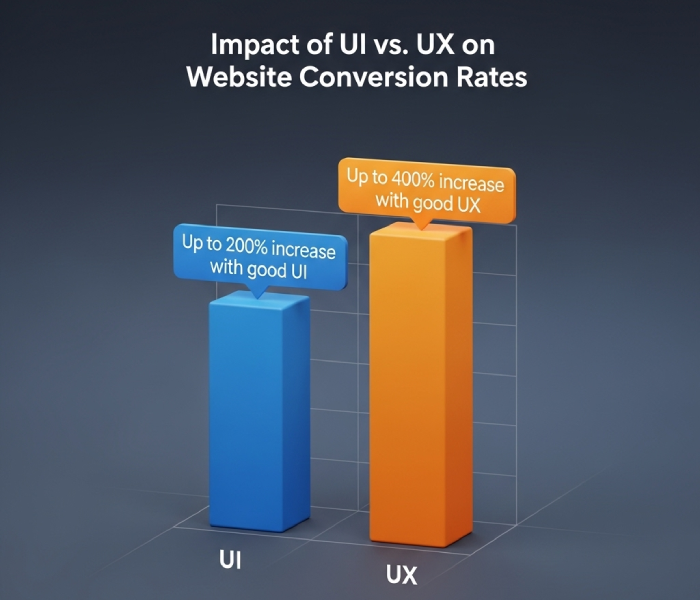
List of Best Tools for Web Designers in 2025
| Tool Name | Key Features | Starting Price | Best For |
| Figma | Real-time collaboration, vector editing, prototyping, component libraries | Free | UI/UX Design & Collaboration |
| Sketch | Vector-based UI design, reusable components, large plugin ecosystem | $12/editor per month | UI Design on macOS |
| Adobe Photoshop | Advanced photo editing, raster graphics, layer-based editing | $22.99/month | Photo Editing & Graphics |
| Adobe Illustrator | Vector graphics, logo design, typography tools, illustration | $22.99/month | Vector Graphics & Logos |
| Webflow | Visual web design, CMS, hosting, no-code/low-code development | Free (Site plans from $14/mo) | No-Code Web Development |
| Visual Studio Code | Code editor, IntelliSense, debugging, extensions, Git integration | Free | Web Development & Coding |
| Elementor | Drag-and-drop page builder, theme builder, pop-up builder for WordPress | Free (Pro from $59/year) | WordPress Page Building |
| Notion | All-in-one workspace, project management, wikis, databases | Free (Plus from $8/mo) | Project Management & Docs |
| Google Fonts | Large library of free fonts, easy web integration, open-source | Free | Web Typography |
| Canva | Graphic design, templates, social media assets, brand kits | Free (Pro from $119.99/year) | Quick Graphic Design |
1. Figma

Launched in 2016 by co-founders Dylan Field and Evan Wallace, Figma quickly transformed the design landscape by offering a collaborative, browser-based interface.
Its primary use is for UI/UX design, allowing entire teams to work on the same file in real-time, which eliminates the version control issues that plagued older design software. Figma is perfect for creating wireframes, high-fidelity mockups, and interactive prototypes.
Its vector-based tools are intuitive for interface design, and its system of components and styles ensures consistency across large-scale projects, making it a go-to for product design teams.
Features:
- Real-time collaboration with multiplayer editing.
- Browser-based accessibility on any operating system.
- Powerful vector editing and prototyping tools.
- Reusable components and shared team libraries.
Starting Price: Free for up to 3 files, with paid plans starting at $12 per editor/month.
2. Sketch
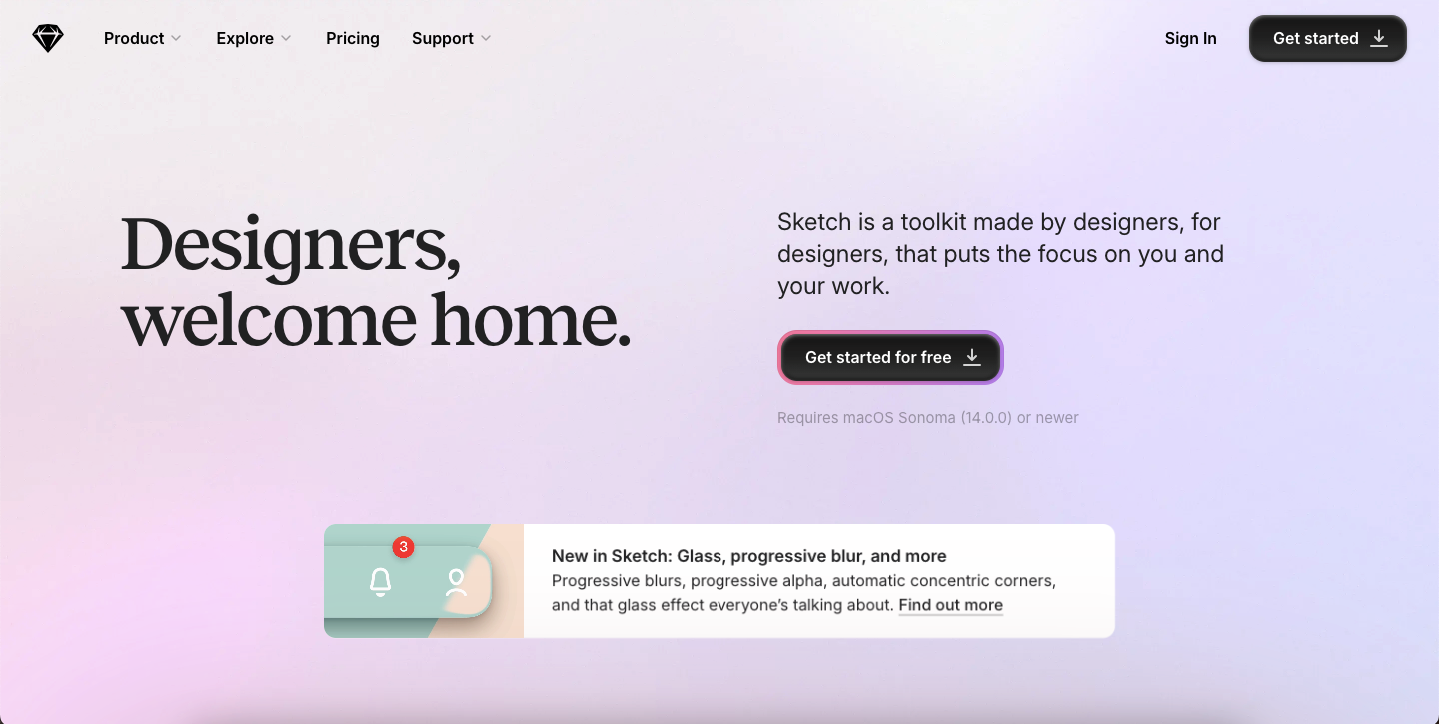
First released in 2010 by the Dutch company Bohemian Coding, Sketch became the industry standard for UI design on macOS. It is a vector graphics editor built specifically for designing interfaces, apps, and websites.
Its clean, intuitive interface and powerful features like Symbols, Shared Styles, and Libraries allow designers to create consistent and scalable design systems.
While Figma has captured much of the collaborative market, Sketch remains a favorite for many Mac-based designers due to its powerful plugin ecosystem and offline capabilities, making it ideal for individual designers and teams committed to the Apple ecosystem.
Features:
- Intuitive vector-based UI design tools.
- Reusable components (Symbols) for design consistency.
- Extensive library of third-party plugins.
- Works offline, with syncing capabilities for collaboration.
Starting Price: $12 per editor, per month.
3. Adobe Photoshop
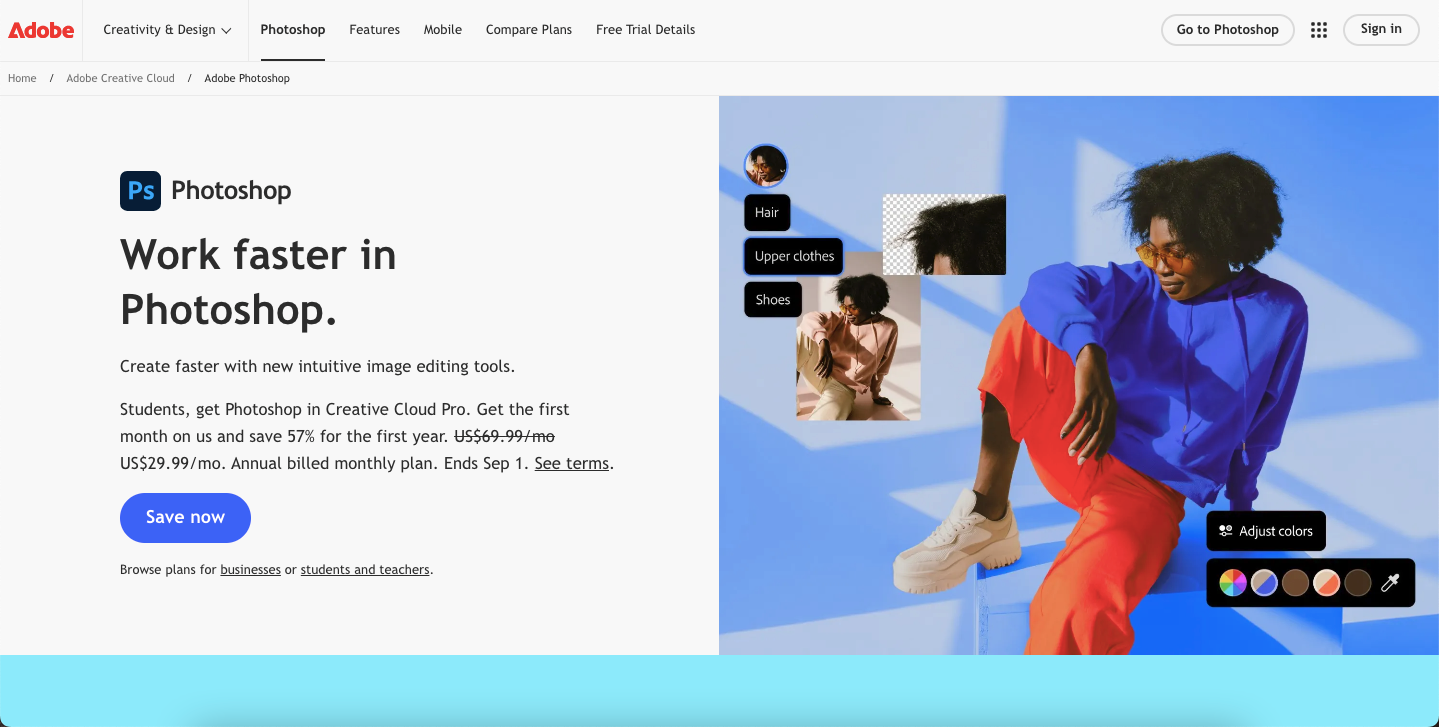
The original titan of digital imaging, Adobe Photoshop was created by brothers Thomas and John Knoll and first launched in 1990. While it is a raster-based editor primarily known for photo manipulation and editing, it remains a vital tool for web designers.
Photoshop is essential for creating and editing custom graphics, textures, and imagery for websites. Its advanced selection tools, filters, and layer-based editing system provide unparalleled control over visual assets.
Although not the primary tool for laying out entire websites anymore, it is indispensable for preparing images and creating bespoke graphical elements that make a design unique.
Features:
- Industry-leading photo editing and manipulation.
- Advanced layer-based editing for complex compositions.
- Powerful tools for color correction, retouching, and effects.
- Integration with the Adobe Creative Cloud suite.
Starting Price: $22.99/month as part of the Creative Cloud Photography plan or as a single app.
4. Adobe Illustrator

Released by Adobe in 1987, Adobe Illustrator is the industry-standard software for vector graphics. Unlike raster graphics (pixels), vector graphics are based on mathematical equations, allowing them to be scaled to any size without losing quality.
This makes Illustrator the perfect tool for creating logos, icons, and complex illustrations for the web. Web designers rely on it to produce crisp, scalable graphics that look sharp on any screen, from a small mobile device to a large retina display.
Its powerful drawing tools, typography controls, and pathfinder options give designers complete creative freedom.
Features:
- Precision tools for creating scalable vector graphics.
- Advanced typography and font management.
- Seamless integration with other Adobe Creative Cloud apps.
- Artboards for designing multiple assets in one file.
Starting Price: $22.99/month as a single app.
5. Webflow
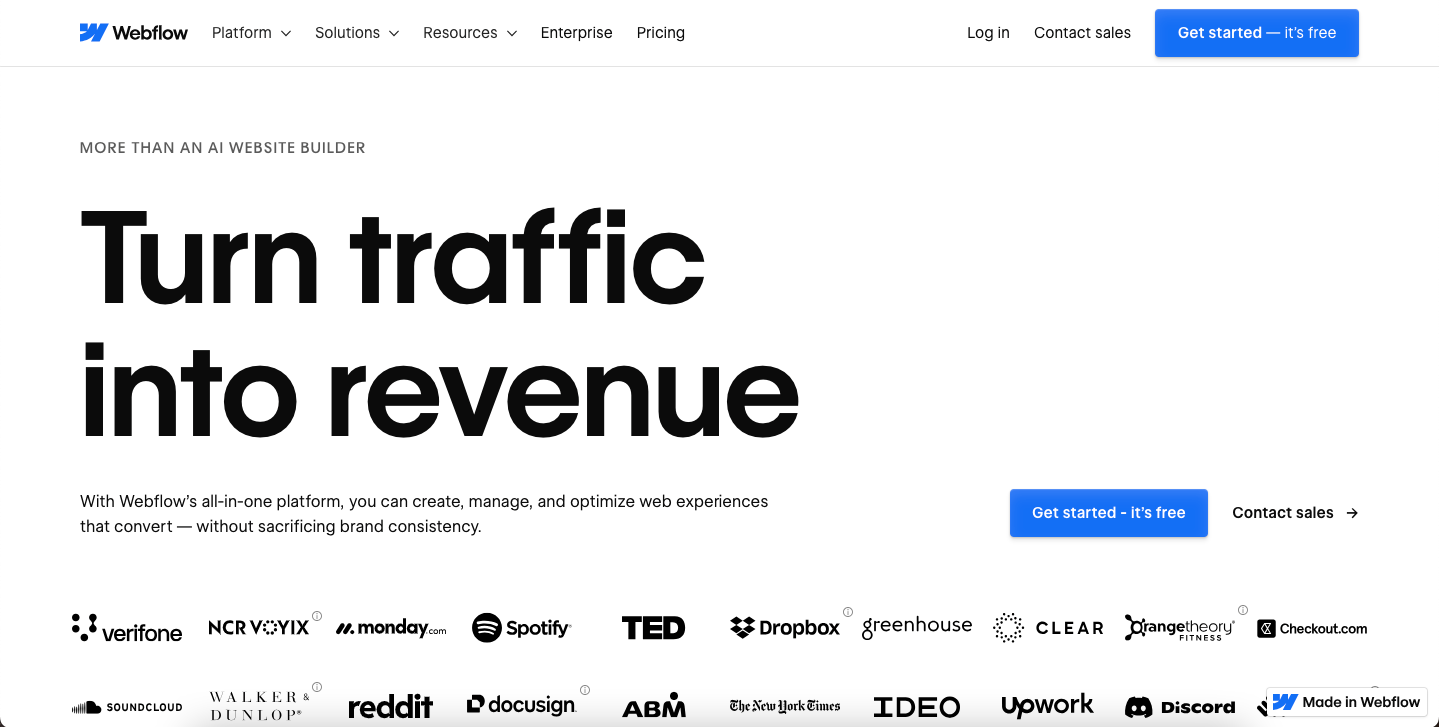
Founded in 2013 by Vlad Magdalin, Sergie Magdalin, and Bryant Chou, Webflow is a revolutionary no-code/low-code platform that empowers designers to build professional, production-ready websites visually.
It bridges the gap between design and development by allowing users to design with the full power of HTML, CSS, and JavaScript without writing a single line of code. Webflow is ideal for creating responsive, custom websites with complex animations and interactions.
It also includes a built-in CMS and enterprise-grade hosting, making it an all-in-one solution for freelancers, agencies, and marketing teams who need to launch high-quality sites quickly.
Features:
- Visual, drag-and-drop website builder.
- Integrated CMS for dynamic content.
- High-performance, secure hosting.
- Advanced tools for animations and interactions.
Starting Price: Free to start building; site plans start at $14/month (billed annually).
6. Visual Studio Code
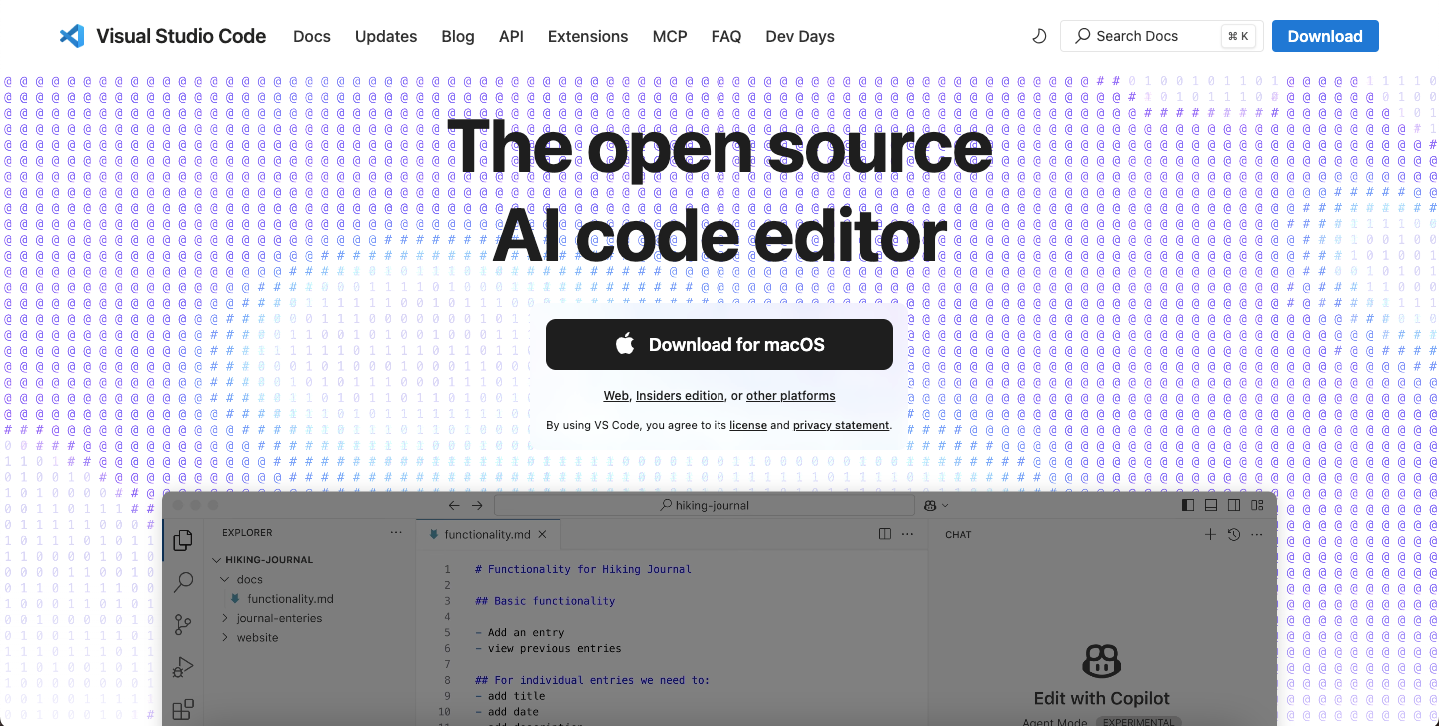
Launched by Microsoft in 2015, Visual Studio Code (VS Code) is a free, open-source code editor that has become incredibly popular among web developers and designers who code.
It’s lightweight yet powerful, with support for hundreds of languages and an extensive marketplace of extensions that can customize its functionality. For web designers who also handle front-end development, VS Code is an essential tool.
Features like IntelliSense (smart code completion), built-in Git control, and a powerful debugger streamline the coding process, making it faster and more efficient to turn design mockups into functional websites.
Features:
- Lightweight, fast, and highly customizable.
- IntelliSense for smart code completion and suggestions.
- Huge library of extensions for added functionality.
- Built-in debugging tools and Git integration.
Starting Price: Free.
7. Elementor
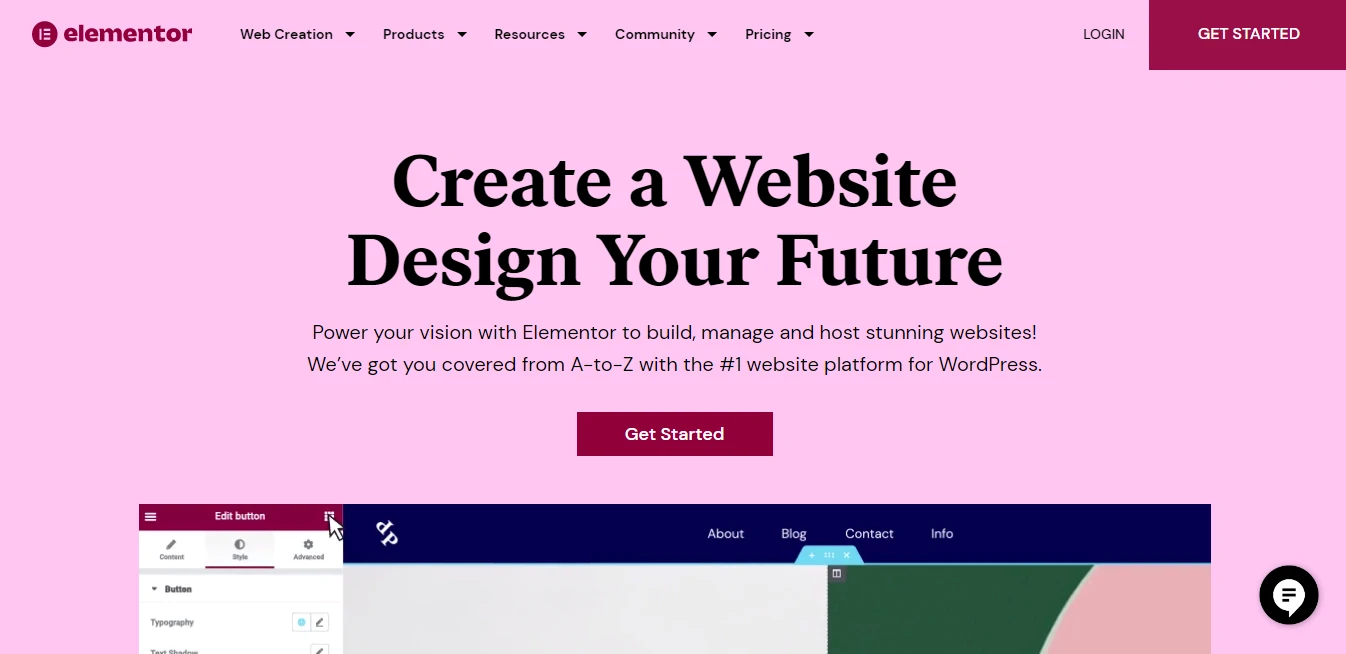
Founded in 2016 by Yoni Luksenberg and Ariel Klikstein, Elementor is a drag-and-drop page builder plugin for WordPress. It revolutionized how websites are built on the world’s most popular CMS by allowing users to create complex, pixel-perfect layouts without needing to know any code.
Elementor is the perfect tool for designers who use WordPress as their platform of choice. Its live visual editor, extensive widget library, and template options make it easy to design everything from landing pages to full-blown e-commerce sites.
The Theme Builder feature in the Pro version gives designers control over every part of their website.
Features:
- Intuitive drag-and-drop live editor for WordPress.
- Large library of widgets, templates, and design kits.
- Theme Builder for customizing headers, footers, and other site parts.
- Responsive design controls for mobile optimization.
Starting Price: Free version available; Pro plans start at $59/year for one website.
8. Notion
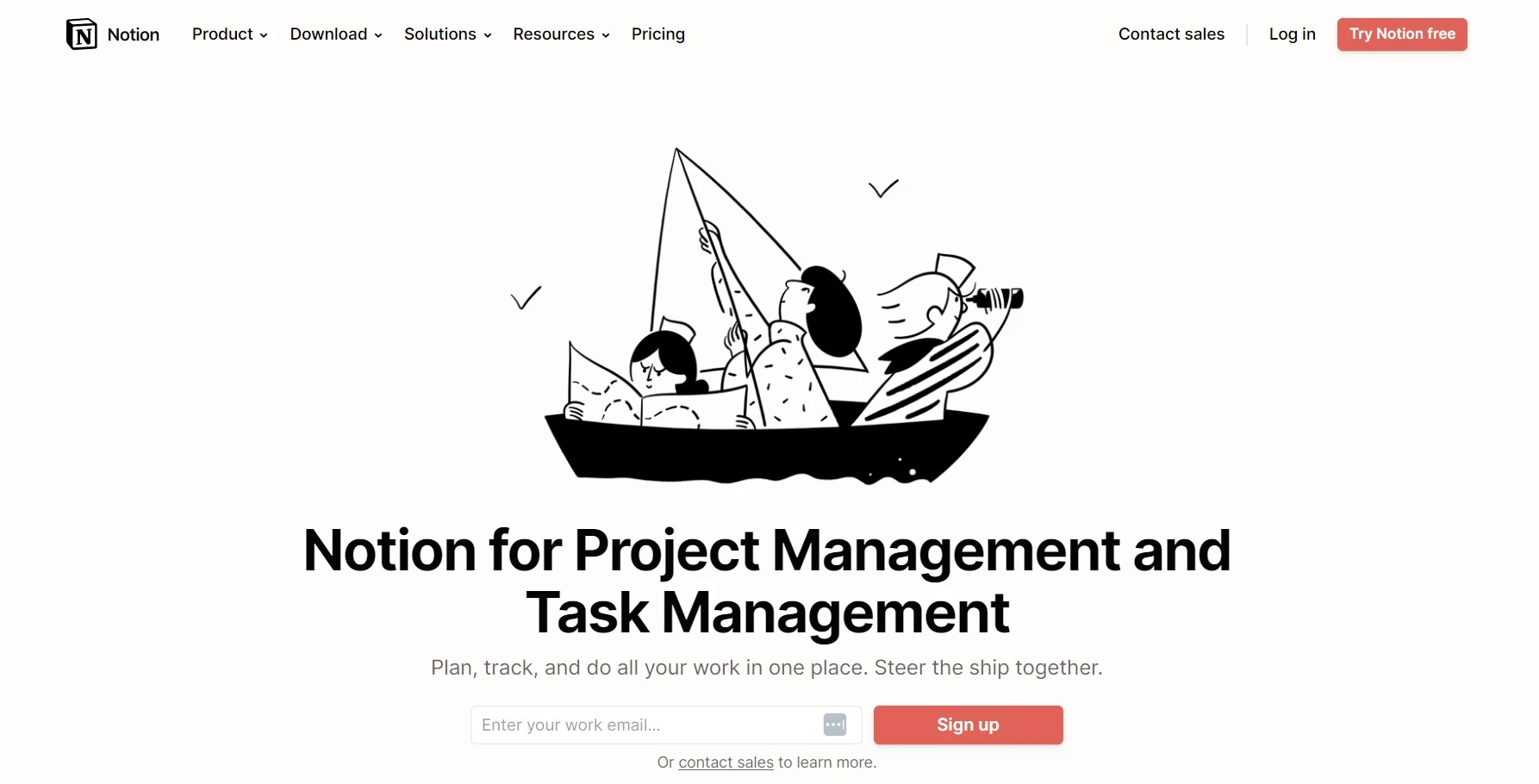
Launched in 2016 by Ivan Zhao and Simon Last, Notion is an all-in-one workspace that combines notes, tasks, wikis, and databases. While not a design tool in the traditional sense, it has become an indispensable part of a web designer’s workflow.
Designers use Notion to manage projects, create design briefs, build mood boards, collaborate with clients, and document design systems.
Its flexibility allows teams to create customized dashboards that centralize all project-related information, from initial research and inspiration to final feedback and asset delivery, keeping everyone organized and on the same page.
Features:
- Flexible, all-in-one workspace for notes, tasks, and databases.
- Highly customizable pages and templates.
- Real-time collaboration and commenting features.
- Integrates with other tools like Slack, Figma, and GitHub.
Starting Price: Free for personal use; paid plans start at $8 per user/month.
9. Google Fonts
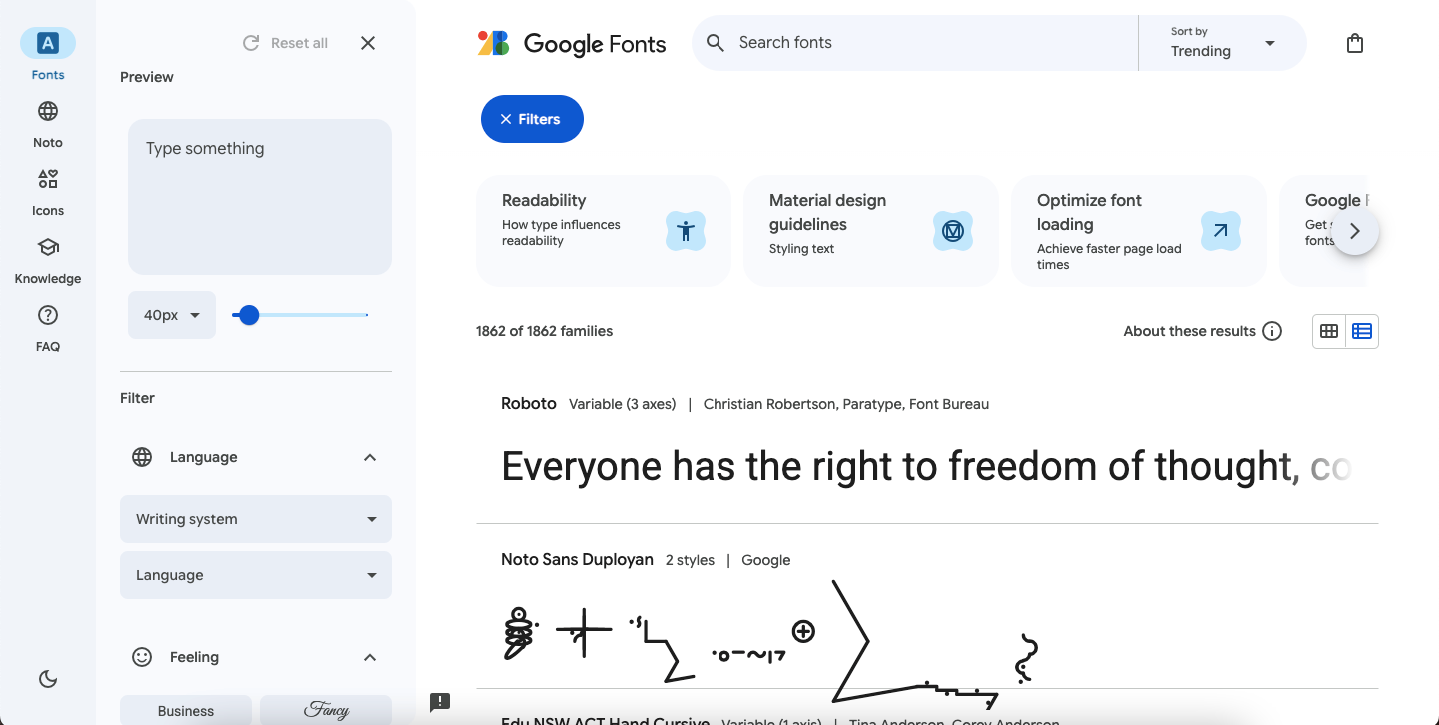
Launched in 2010, Google Fonts is a massive library of free and open-source font families. It has become a cornerstone of web design, providing designers with access to a diverse range of high-quality typography at no cost.
Good typography is crucial for readability, user experience, and brand identity, and Google Fonts makes it incredibly easy to find and implement beautiful fonts on any website.
With simple integration via CSS and a user-friendly interface for browsing and testing font pairings, it’s an essential resource for any web project, ensuring that text is both legible and visually appealing.
Features:
- Extensive library of over 1,500 free font families.
- Easy to browse, preview, and implement on websites.
- All fonts are open-source and free for commercial use.
- Optimized for web performance.
Starting Price: Free.
10. Canva
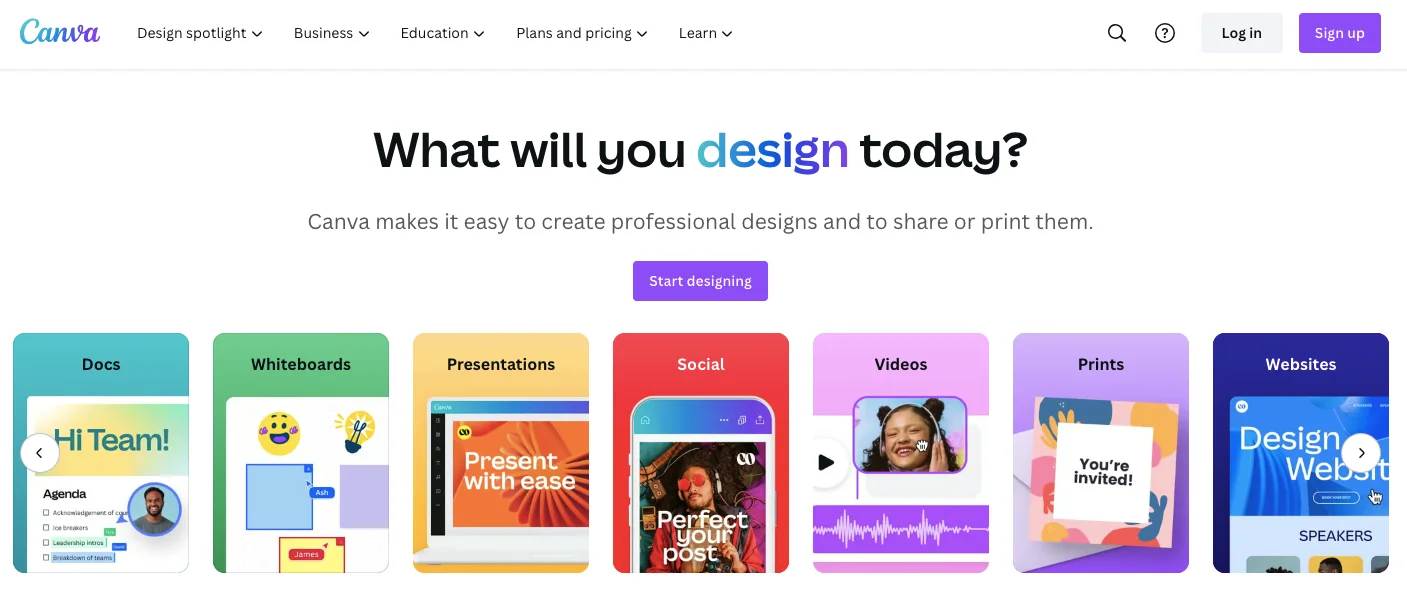
Founded in 2013 by Melanie Perkins, Cliff Obrecht, and Cameron Adams, Canva is a user-friendly online design platform that makes it easy for anyone to create professional-quality graphics.
While it may not replace specialized tools like Photoshop or Figma for complex UI work, it is an invaluable tool for web designers who need to quickly create supplementary materials.
Canva is perfect for producing social media graphics, blog post images, presentations, and marketing assets that align with a website’s brand identity. Its vast library of templates, stock photos, and design elements helps speed up the creative process significantly.
Features:
- Simple drag-and-drop interface.
- Massive library of templates, stock photos, and graphics.
- Brand Kit feature for maintaining brand consistency.
- Collaboration features for team-based design.
Starting Price: Free; Pro plans start at $119.99/year for one person.
Key Considerations for Selecting Web Design Tools
When selecting tools, web designers must evaluate several factors to ensure efficiency, compatibility, and high-quality output. The ideal toolset aligns with project requirements, team workflows, and budget constraints.
1. Core Functionality and Features
The primary consideration is whether the tool can perform the required tasks effectively.
- Design Capabilities: Does it support vector and raster graphics? Does it have robust features for creating layouts, typography, and color systems?
- Prototyping: Can you create interactive, clickable prototypes to simulate user flow and test usability?
- Responsive Design: Does the tool provide artboards and features for designing across multiple screen sizes (desktop, tablet, mobile)?
- Component Libraries: The ability to create and reuse components (symbols, assets) is critical for maintaining consistency and speeding up the design process.
2. Learning Curve and Usability
An intuitive user interface (UI) allows designers to work faster and with less friction.
- Intuitive Interface: A tool with a steep learning curve can slow down project timelines. Evaluate how quickly a new user can become proficient.
- Available Resources: Check for comprehensive documentation, official tutorials, and community-made guides.
3. Collaboration Features
Modern design is a team effort. Tools must support seamless collaboration between designers, developers, and stakeholders.
- Real-Time Editing: Features like multi-user editing, similar to Google Docs, are standard in tools like Figma.
- Commenting and Feedback: The ability for stakeholders to leave comments directly on designs streamlines the review process.
- Version Control: A reliable history of changes is essential for tracking progress and reverting to previous versions if needed.
4. Integration and Ecosystem
A design tool should not exist in isolation. Its ability to connect with other software in the workflow is crucial.
- Developer Handoff: Does the tool generate CSS, specs, and assets for developers? Can it integrate with tools like Visual Studio Code or Zeplin?
- Plugin Architecture: A strong ecosystem of third-party plugins can extend a tool’s functionality, adding features for animation, data management, or accessibility checking.
- File Compatibility: Ensure the tool can import from and export to standard file formats required by other workflow tools.
5. Pricing and Licensing Model
The cost structure must align with your budget and usage patterns.
- Subscription vs. One-Time Purchase: Many modern tools operate on a Software as a Service (SaaS) subscription model, while others may offer a one-time purchase license.
- Freemium Tiers: Some tools offer a free plan with limited features, which is useful for individuals, freelancers, or small-scale projects.
- Total Cost of Ownership: Consider any additional costs for plugins, fonts, or asset libraries.
6. Platform Compatibility
The tool must be accessible to all team members, regardless of their operating system.
- OS Support: Is the tool available on Windows, macOS, or both?
- Web-Based vs. Desktop App: Web-based tools like Figma and Canva offer superior accessibility and collaboration, as they can be accessed from any browser.
7. Performance and Scalability
The software must handle projects of varying complexity without lagging.
- Handling Large Files: Assess how the tool performs when working with large, complex design files containing numerous artboards and assets.
- Design Systems: For larger organizations, the tool must be robust enough to build and maintain a comprehensive design system.
FAQs
What is the best tool for a beginner web designer?
For beginners focusing on design, Figma is an excellent starting point due to its intuitive interface, free plan, and strong community support. For those wanting to build websites without code, Webflow or Elementor for WordPress are great choices.
Do I need to know how to code to be a web designer?
Not necessarily. Tools like Webflow and Elementor allow you to build professional websites without writing code. However, understanding the basics of HTML and CSS can be very beneficial for customizing designs and troubleshooting issues.
Can I use just one tool for all my web design work?
It’s unlikely. Most web designers use a combination of tools. For example, you might use Figma for UI design, Photoshop for image editing, and Webflow to build the final website.
Are free web design tools good enough for professional work?
Yes, many free tools are powerful enough for professional projects. Figma, Visual Studio Code, and Google Fonts are all free and used by top professionals and agencies worldwide.
What is the difference between UI and UX design?
UI (User Interface) design focuses on the visual aspects of a website—the buttons, colors, and layout. UX (User Experience) design is about the overall feel of the experience and ensuring the website is functional, intuitive, and easy for users to navigate.
Is Sketch still relevant with the rise of Figma?
Yes, Sketch is still a powerful and relevant tool, especially for designers and teams who work exclusively on macOS and prefer its native app performance and extensive plugin library.
Which tool is best for creating a portfolio website?
Webflow is an excellent choice for creating a highly custom and interactive portfolio website without coding. For WordPress users, Elementor provides great flexibility.
Do I need Adobe Photoshop if I have Figma?
While Figma can handle basic image editing, Photoshop remains superior for advanced photo manipulation, retouching, and creating complex raster graphics. Most designers use both.
How can I choose the right tools for my needs?
Consider your primary role (design, development, or both), your budget, your operating system, and the types of projects you work on. Start with free versions or trials to see which tools best fit your workflow.
Conclusion
Selecting the right tools is a critical step in building a successful career in web design. The software you choose directly influences your workflow, creative capabilities, and the final quality of your work. The ten tools highlighted in this article—from design and prototyping platforms like Figma and Sketch to development powerhouses like Webflow and Visual Studio Code—represent the best in their respective categories.
Whether you’re crafting a pixel-perfect user interface, editing stunning visuals in Adobe Photoshop, or building a dynamic website with Elementor, having a versatile toolkit is essential. Tools like Notion help keep projects on track, while resources like Google Fonts and Canva provide the finishing touches that elevate a design from good to great. By investing time in mastering these platforms, you can streamline your process, collaborate more effectively, and ultimately create websites that are not only beautiful but also deliver exceptional user experiences.




